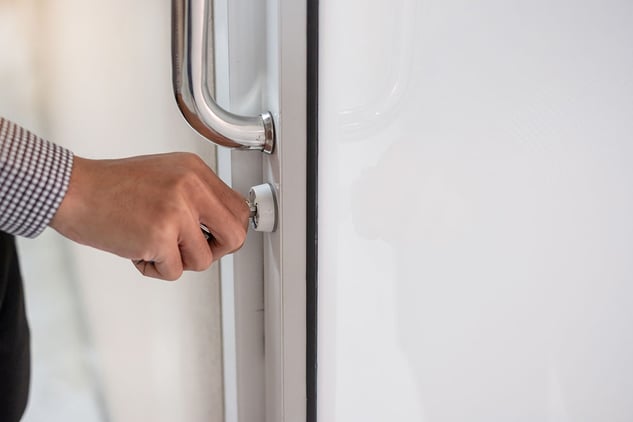How Does a Master Key Work?

If you work in a corporate or retail setting, you may have heard of master key systems. But do you know how they work and how to use them effectively? In this article, we’ll explore the basics of how a master key works and best practices for implementing them in your organization.
What is a Master Key?
First, let's start with the basics. A master key system is a hierarchical system of locks and keys that allows for different levels of access to be granted to different people. A master key is a key that can open multiple locks, while sub-master keys can open some locks but not others. Regular keys only open one lock. This system is useful for organizations that need to provide different levels of access to different employees or groups of people.
Master keys are commonly used in larger organizations where there are multiple levels of access control needed. For example, in a corporate office building, there may be individual keys for each office or department, but a master key would be used by higher-level employees or security personnel to access all areas of the building.
How Does a Master Key Work?
On its face, a master key looks just like any other key. It has grooves cut in to fit it to certain locks, just like any other key. What makes a master key different has more to do with the locks it's keyed for. A regular lock has a standard set of pins that only unlock for one groove pattern. But a lock keyed for a master key has an additional set of pins, allowing it to be accessed not only by an individual key, but by a master key as well.
Best Practices for Implementing a Master Key System
When implementing a master key system, it’s important to follow best practices to ensure the security of your organization. Here are the top three best practices for using master keys:
#1: Limit Access
Only give master keys to those who truly need them. This is especially crucial when using a master key system, where the number of individuals with access to higher-level security areas should be limited to only those who require it. By restricting the number of individuals with master keys, the organization can effectively enhance its security measures and reduce the risk of unauthorized access.
#2: Use Restricted, Serialized Keys
The loss or theft of a user or master key can put an organization at risk of a security breach. Unauthorized duplication of keys is also a significant concern, as unaccounted-for keys can be replicated without the organization's knowledge, potentially granting access to unauthorized individuals. By using serialized keys, the organization can easily track the usage of each key and identify any missing keys through regular audits. It's important to use restricted, serialized master keys as they are easier to track and cannot be duplicated without permission. This best practice helps to ensure the security of the facility and the safety of its occupants.
#3: Key Tracking Software is a Must
Using restricted, serialized keys and limiting access to only those who require it can get you pretty far. But it’s crucial to have a foolproof method for tracking master keys. If your organization is growing or facing a lot of turnover, that method needs to be scalable. While paper files or spreadsheets may suffice for small organizations with a limited number of keys, managing a master key system with a large number of keys becomes too complex without proper key tracking software. Cloud-based key tracking software offers real-time visibility, up-to-date information, and a comprehensive understanding of master keys, locks, and key holders.
Master keys are an essential tool for managing access control in larger organizations. By understanding how they work and implementing these best practices, you can ensure the security of your organization while still providing convenient access for authorized personnel.
Want to learn how to make your master key system more secure? Talk to an expert at InstaKey today and get answers to all of your questions.




![Key Control: The Role of a Master Key [+Best Practice Tips]](https://info.instakey.com/hs-fs/hubfs/Key%20Control-%20The%20Role%20of%20a%20Master%20Key.jpeg?width=352&name=Key%20Control-%20The%20Role%20of%20a%20Master%20Key.jpeg)